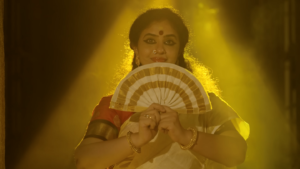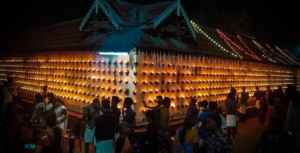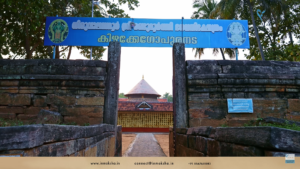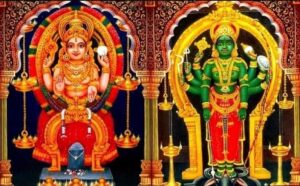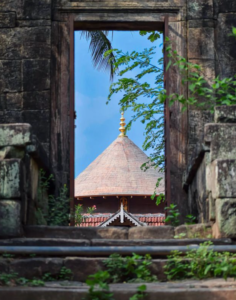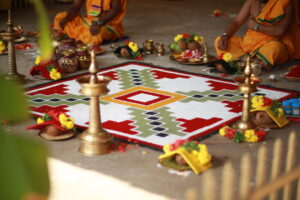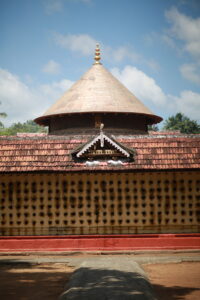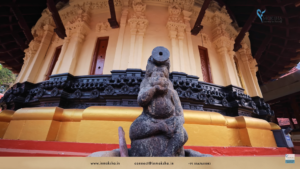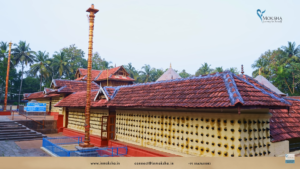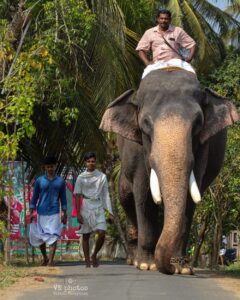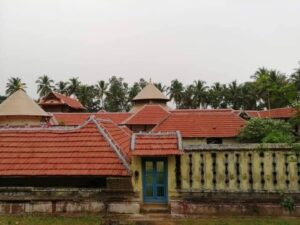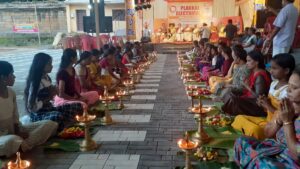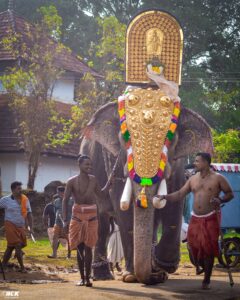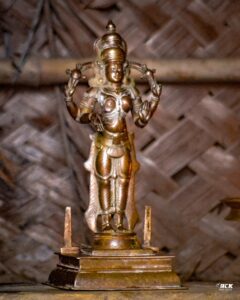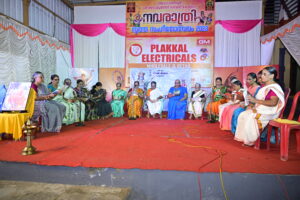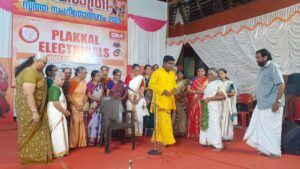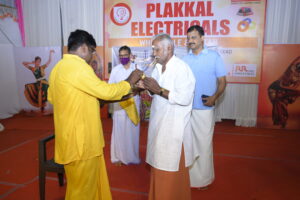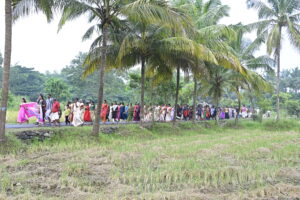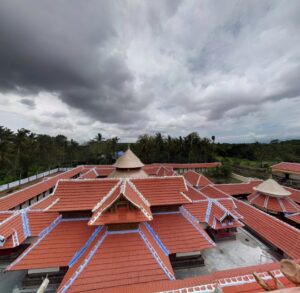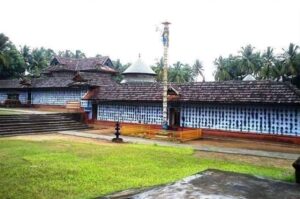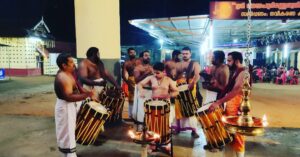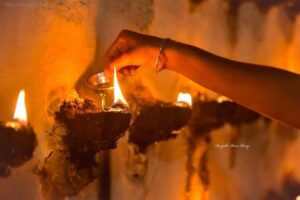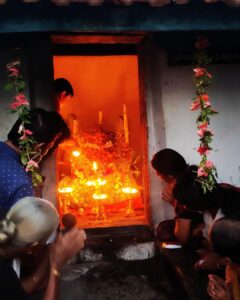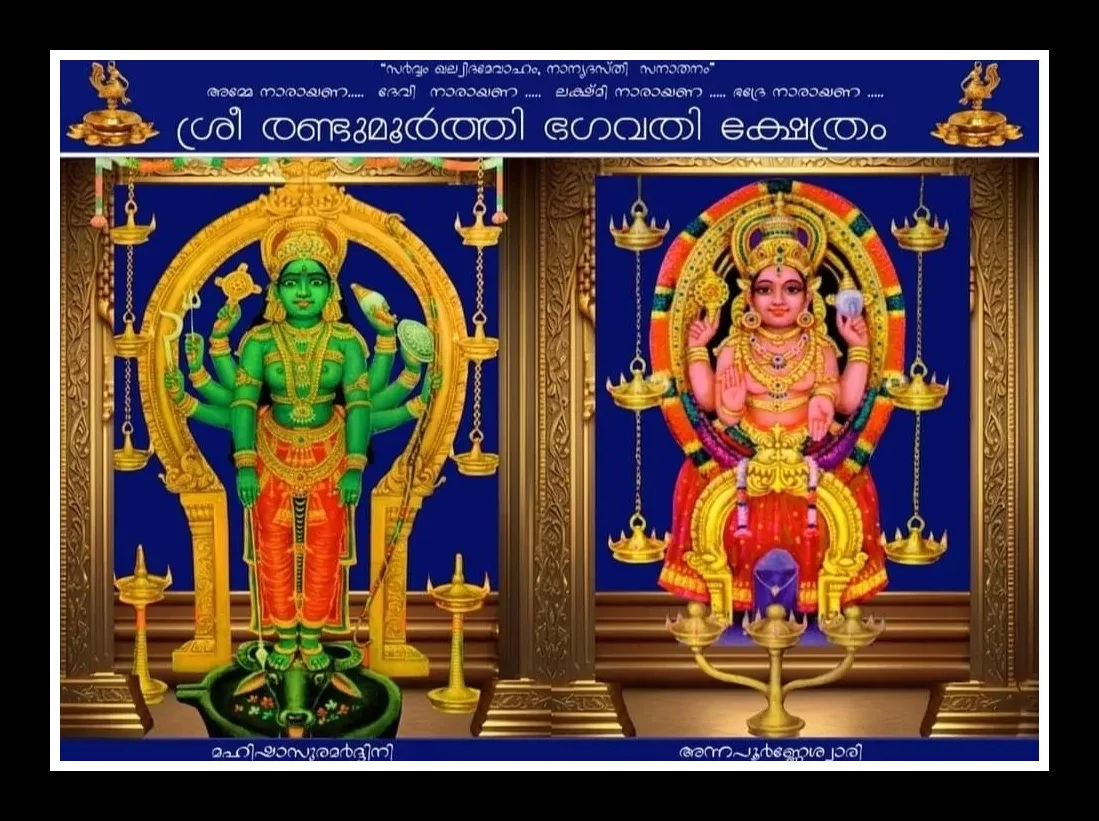Temple Origin
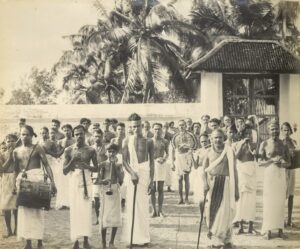
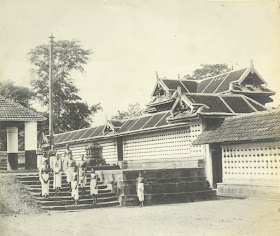
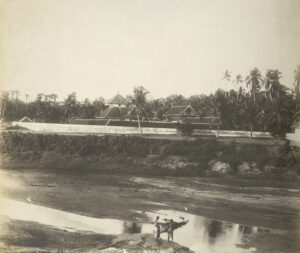
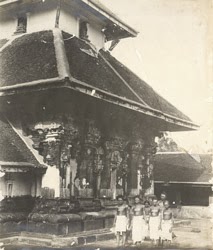
Place Name
In the past, Shokanashini used to flow along the left side of the paddy fields where the temple stands today. Later, due to Devi’s intervention, it became on the right side. That is how the place where the temple stands, ‘Thiruvalathar’ was lost and became the place name Tiruvalathur.
Mahishasuramardini
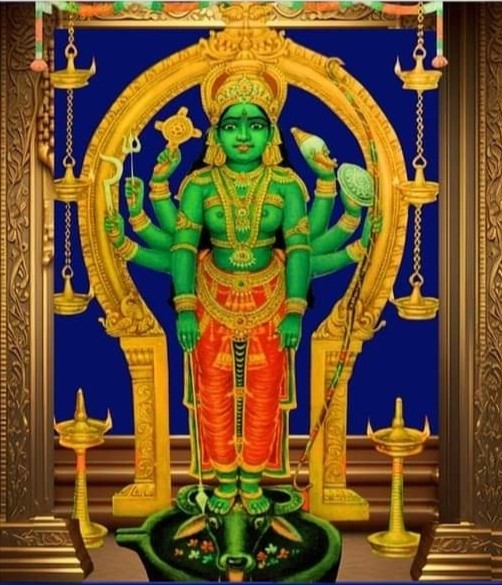
According to legend, the first deity in the temple is Mahishasuramardhini who resides in the northern Srikovil. The idol of the Supreme Goddess Mahishasuramardhini is about six feet tall. Darshan is towards the west. The arms of the eight-armed idol include conch shell, wheel, mace, arrow, bow, sword and trident. Daruvigra Pratishtha (Varikapalav) is made by stepping on both the ears of Mahishtha and piercing Mahishtha’s ear with a skewer in the right hand and arrow and bow in the left hand with Mahishtha’s horn. On the right side of the Daruvigra is the archanabimbam of Mahitasuramardini. Archana, pooja and decorations are done in this archanabimba.
Annapoorneswari
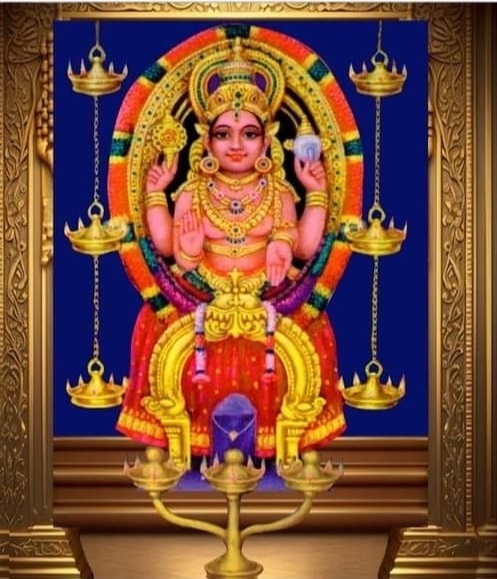
Annapurneshwari Pratishtha, the Swayambhu of the temple, also has a unique legend. It is believed that such a shrine came after the dedication of Mahishasuramardini. The story goes like this:
The ferocious devotion of Mahishasuramardini caused various troubles in the country. Heavy rains, floods, crop damage etc. are important among them. The natives, saddened by such close encounters, prayed to the goddess herself. Devastated by the pain of the devotees, the goddess incarnated as Swayambhu in the south of the shrine of Mahishasuramardini. Then the locals built a new shrine there and started worshiping the goddess in Annapurneshwari concept. Legend has it that not only there were no problems after this, but the village began to flourish with greater economic prosperity.
The Wall (Anappalimathil)
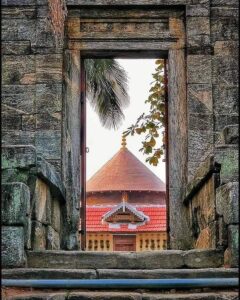
The biggest feature of this temple is its huge wall. Legend has it that it is not man-made. There is a story behind its construction. The story goes that this wall was built by demons and they built it in one night, but before the work was completed, the rooster crowed and they abandoned the work and left the place. As proof of this, it can be understood that the work of the eastern tower and the wall on the eastern side have not been completed. It is also said that the granite stones used to build this temple wall were brought from a place called Para, which has now become a carriageway.
The temple has the finest woodwork and stone sculptures. The massive granite walls and entrances around are fascinating. How they managed to move 2-5 ton pieces of granite to such heights makes us wonder. It is one of the most attractive granite walls in Palakkad.
Temple Architecture
Temple premises and walls
The temple is situated in Tiruvalathur village on the south bank of Shokanashini. Those coming from Palakkad or Chittur have to cross the bridge across the river from Kodumbu Althara bus stop to reach the temple. Apart from the Thiruvalathur LP School and a few shops, there are no notable structures in the temple premises. The south and west sides of the temple are paddy fields. There are still many paddy fields here. Green fields and trees will attract anyone. After a short distance, you will reach the west tower of the temple. There is a very small tower here. A large temple pond is located near the gopuram. It is known as the Anthimahakalan pond. The Anthimahakalan deity, believed to be the protector of the goddess, is enshrined in a small idol resembling a Shivalinga on the roofless floor. Between the temple gopuram and the pond, there are 10 Devaswam Pathayapuras on both sides. After crossing these, you can reach the temple wall. Thiruvalathur temple has a very wide wall spread over two floors. Among these is the temple of Mahishasuramardhini on the upper floor and the temple of Annapurneswari on the lower floor. Marriage, choroon, bhajan etc are performed below in Annapoorneswari temple. Today it is seen in a revamped form after a renovation in 2017. Thiruvalathur Devaswom is a Grade – 3 Devaswom under the Malabar Devaswom Board.
Koothambalam is situated in the northwest. It is a small structure standing on a circular floor. If you go down through the eastern gopuram of the temple and go a short distance, you can reach Arattukadavu near the river. Aarattu is performed here for Bhagvathy during the festival. The view of the river from here is beautiful. Many people come to see it. The ancient Aliyar Shiva temple complex is located facing the flowing Shokanashini River. The sub-deities of the temple like Shiva Parvati, Sankara Narayana, Sri Krishna and Ganesha are located here.
The most important part of this four-gopuram temple is the East Gopuram, which remains an unfinished gopuram. The legend related to the story of Bhutaganas is said to be the reason. On the north side, if you go down Ambalakadavu and look from the bank of Shokanashini river, you can see Ayyappankau and Sarpakau.
History Document by Vasthu Vidya Gurukulam
Prepared by Mahalingam R
GALLERY
